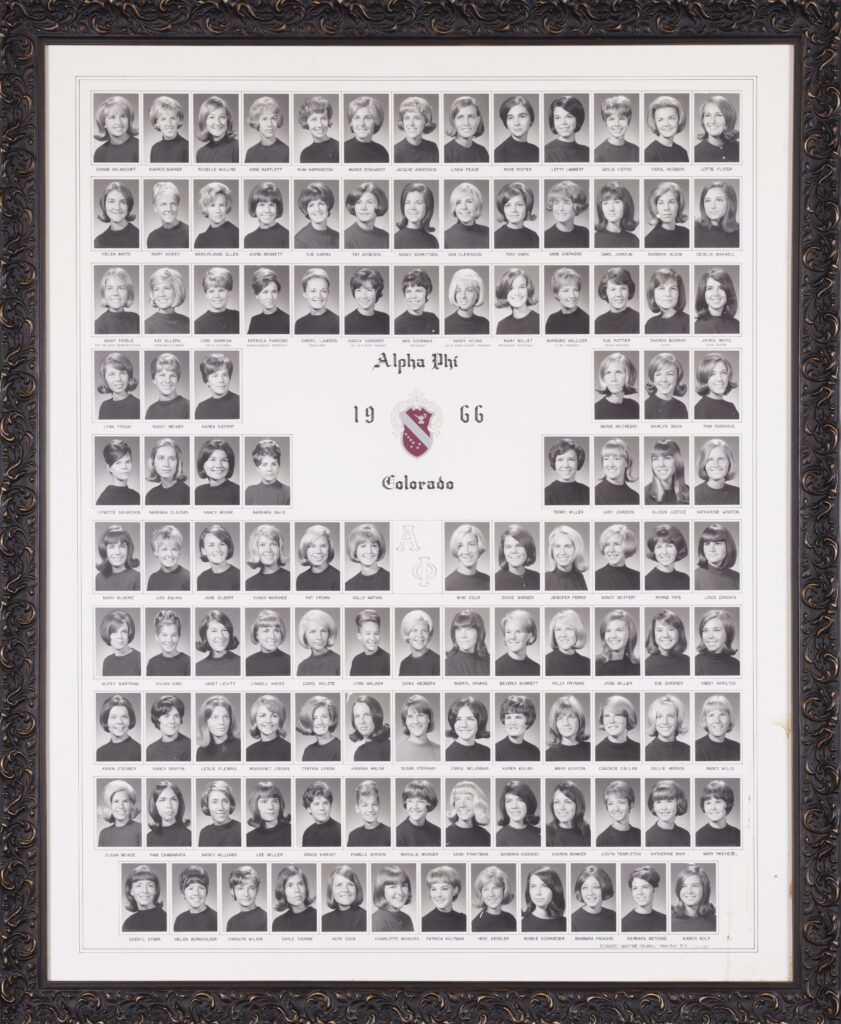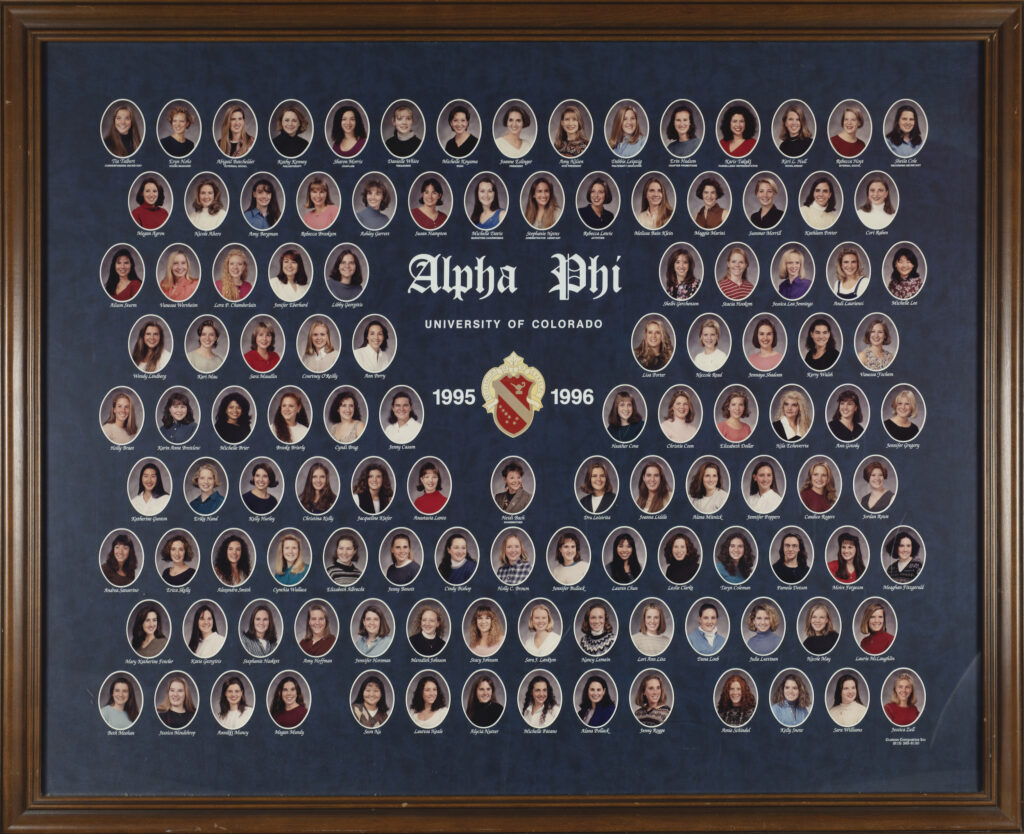Composites are a defining feature of Greek life. Each year young men and women have their photos taken to be collectively displayed in chapter houses, to have prints made for their parents or to save as a personal keepsake. For members of fraternal communities, composites are an annual tradition, a fond memory and a spark for nostalgia among alumni. But they’re also incredibly helpful research tools that visually communicate the history of these organizations through a unique lens.

In the early 1900s, the days before PhotoShop, Greek organizations consolidated individual portraits into larger, framed pieces by hand. The finesse and intricacy of these composites varied between organizations and regions, but they all took a great deal of pride in creating them.

In the 1950s and ‘60s, composites trended toward a more precise grid structure that mirrored the brutalist trends of the era. Then we get bursts of color and craft-board mounting in the 1970s and ‘80s, and in the 1990s and early-2000s we see composites reach a more standardized look across organizations.

The differences we see over time in photography style, framing and mounting and printing capabilities are just the beginning of what composites can share about Greek life. When studied collectively, you can easily identify trends in hairstyles, clothing, fluctuations in the size of an organization and more. Individually, you can track when friends and family were active chapter members, the years they joined and graduated or if they served as officers. However, these details and stories are at risk of being lost.
Composites are big — we mean big. Think of needing to fit 50 to 100 shining young faces in a single frame. The largest we’ve come across at HistoryIT is 51” by 62”, roughly the size of a nine-year-old child. With limited wall space to display composites, chapters are often put into a position of storing these time capsules in basements, attics and storage sheds without museum-quality glass or acid-free packaging. That’s where HistoryIT’s digital preservation solutions come in to save history.
We work with sorority and fraternity chapters to digitally preserve these important pieces of their history and to share them through digital museums. Our friends at the Theta Chapter of Kappa Kappa Gamma can now review thirty years of their composite collection at any time or in any place. Members and alumni can search for past chapter members or even themselves. They could even use their digital museum to create an interactive display in the chapter house, which takes composites typical use as decor and turns them into an engaging way for members to learn their history.

HistoryIT’s digital preservation process meets the highest of industry standards. Scan is a four-letter word in our offices because proper digital preservation requires a much more in-depth process and a well-trained set of skills. HistoryIT Digital Imaging Manager Daniel Orr is our resident preservation imaging expert. He and his team photograph each composite with precise lighting, levels, color and more — all meeting the standards of the Federal Agencies Digital Guidelines Initiative.
Images are saved as raw files in order to future proof against ever-changing technology. Then our metadata team swoops in to tag each person, officer positions and whatever other details might be relevant. This is the magic that allows anyone to research, make connections and discover stories in the chapter’s history.

We help sororities and fraternities transform their dusty composites into easily accessible, highly engaging research tools — saving them and the members pictured from being forgotten. That is at the core of our mission, which is why we are very excited to share that we have evolved our composite preservation and digital museum package to more efficiently serve the needs of our clients. Daniel is hitting the road with a specially designed mobile preservation imaging studio, skipping the step of packaging and shipping each chapter’s massive composite collection.
Learn more about our composite package at historyit.com/composites and maybe we’ll see you in person very soon!






